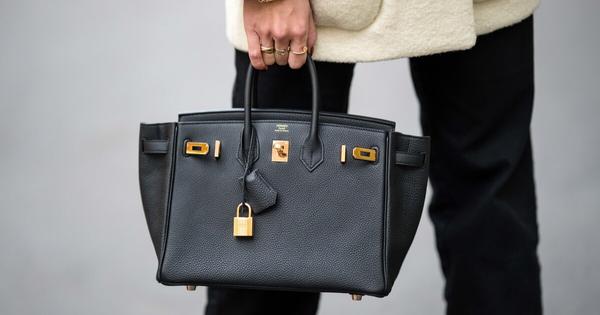Kilometric queues and doubled prices: why the pandemic has turned bags into a great investment
In the last two years, Chanel's legendary bags, led by the 2.55 model, have more than doubled their prices. In Europe, a medium-sized 2.55 is around no less than 7,800, when ten years ago it was around 3,000. The French house has argued for this rise by appealing to taxes, the increase in manufacturing costs and the need to match the price throughout the world. However, there may be less tangible reasons: a recent article published by The Business of Fashion attributed the reason to “wanting to look like Hermès”, that is, to the queen of luxury handbags, whose waiting lists, its prices and their longevity have made their models a safe value. Literally speaking. In 2016, Time magazine reported that the investment value of a Birkin bag over the years had outperformed the S&P 500 of Standard & Poors and even the revaluation of gold. In fact, the most expensive bag sold to date is the same model: it sold in 2020, at a Christie's auction in Hong Kong, for almost half a million dollars.
The truth is that the strategy is working for Chanel. Despite suffering 13% turnover losses during the hardest months of the pandemic (Chanel only sells cosmetics and sunglasses on the Internet), a few days ago Bloomberg warned that in South Korea, dozens of clients queue up at dawn to buy bags when the store opens. “I only go to Chanel. If I am successful and get a bag, even if it is small, I earn at least 250 euros with it”, said one of them. The firm's policy in the country means that you can only buy one on each visit, and if it is a classic model, one per year. Now that trips to European capitals are less frequent, this policy has led to the establishment, in this and other luxury houses, of the mythical waiting lists to acquire a piece, which can last for months. The same ones that, whether true or not, made the Hermés Birkin the most desired bag in the world, with a leading role in one of the chapters of Sex and the City. It is already known that when something is difficult to obtain, it is double or triple valuable and, unlike drops or limited sales of shoes, these models do not appear and disappear with the vagaries of the trend. They are designs that have not gone out of style in fifty or sixty years.
In fact, Hermès broke records again in May 2020 when its store in Guangzhou (China) shipped products worth 2.3 million euros on the day it opened. In July 2021, it had already recovered the pre-pandemic billing level. Sociologists call this curious phenomenon, of waiting in long lines to get hold of a bag of more than six thousand euros, revenge buying, the consumption of long-delayed (very expensive) whims that occur in situations of 'now or never' and which, in this case, are endorsed by the increasingly thriving luxury second-hand market. According to the consultancy Bain & Co., in 2021 this sector reached an estimated value of 37 billion dollars, 65% more than in 2017. In the case of iconic bags, which do not devalue over time and which, on occasions, are revalued , the investment is more than clear.

Queues outside a Chanel store in Hong Kong last December Photo: Gettyimages
Last summer, Forbes magazine echoed the unexpected value as an asset that these pieces were acquiring. According to the data agency Art Market Research, the potential of the bags exceeded that of classic cars and even that of certain works of art. He used those of Chanel, Louis Vuitton and Hermés as an example: their value, specifically that of some of their longest-lived models, had increased by 83% in the last ten years. Luxury watches, for example, had only increased in value by 62%, and the first editions of great literary works, by 43%. In those ten years, the Birkin had almost doubled its value (93%), Chanel's 2.55 had risen no less than 132%. It is not surprising, then, that the banner has decided to follow this strategy of escalating prices and exclusivity or scarcity in inventory to position itself, in the medium term, as the most coveted model in the world.
Meanwhile, there are other new generation models that are pointing ways. As the second-hand bag sales platform Rebag reported a few months ago, Bottega Veneta models in the era of Daniel Lee as creative director, that is, from 2017 to 2021, are sold "in a matter of weeks" to almost the same price of its value in store.
The rage for investing in classic bags, regardless of their price, is such that the madness has already reached the metaverse. Recently, Hermés itself has taken legal action against Maison Rothschild, a company that commercialized MetaBrikins in NFT format, that is, exclusive, expensive and virtual. For their part, the large luxury conglomerates work on huge blockchain systems such as Aura, created by LVMH, to be able to trace the origin and transactions of these digital assets. It seems that the obsession with certain models no longer has to do only with physical possession.
Tags: Chanel|Hermes








1612